At present, making photographs in the documentary vein is rather challenging. Specific limitations dictate a need to take pause and look at options that may include surveying one’s immediate surroundings. As we relaunch the COMP Magazine a series of intimate self-portraits will be produced to illustrate our environment and time encountered during the Covid-19 pandemic. This initial iteration looks at details of an office in Joliet, Illinois at the University of St. Francis coupled with reflections relaying the room’s history and the seemingly disparate manner in which this space has been filled with books, memorabilia, pictures, and conversation over the past 20+ years.
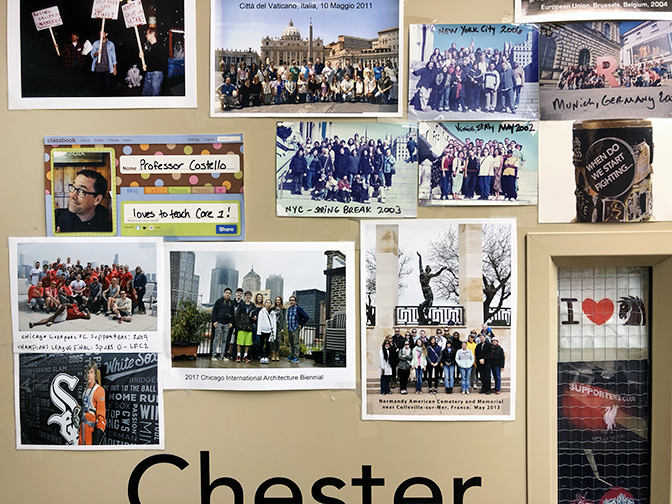
In 2009, the Art & Design Department was moved from the main campus in Tower Hall to the recently renovated Rialto Theater Arts Center after roughly 80 years. Since 1999, an ever changing roster of adjuncts, gallery directors, Paul Erschen, and myself had been working out of a cramped office previously occupied by a cadre of Catholic nuns and teachers who taught specialised classes in ceramics, silver smithing, traditional landscape painting, and weaving . The sister’s contributions cannot be overlooked. Their efforts were significant in establishing a healthy foundation for the future. Though there was a sense of renewal felt in this change, the idea of retaining continuity from past to present to future was consistently on one’s mind.
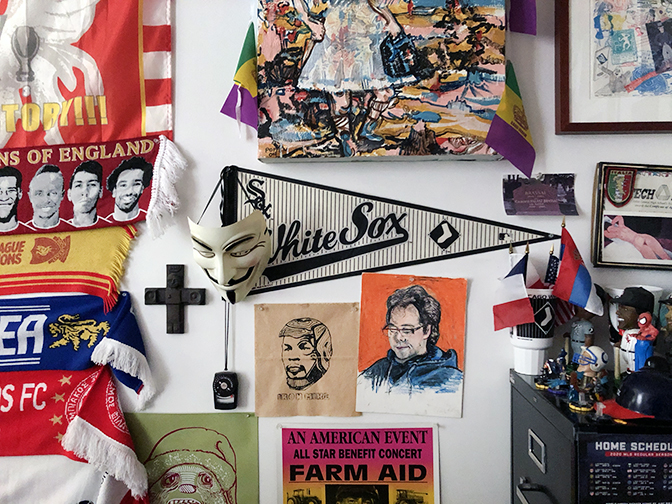
and students with a Chicago White Sox’s pennant.
At core, the office is a time capsule. The space reminds of personal interests, delicate conversations, and an environment where a flurry of lofty ideas (difficult, rarely seamless, and sometimes bizarre) were generated. The variety of thesis projects has been one means for tracking time spent via documenting our student’s various investigations. There has been those who have produced environmental awareness pamphlets as part of a branding project, sonic installations that looked at the local underground music scene, and a series of large scale paintings that translated historically relevant practitioner’s inquiry into a contemporary reading. The range and type of projects have been most diverse. The goal of this process has consistently resided in assisting the student to understand the importance of research and self dedication. This approach is complimented by teaching them that to produce something of quality there are frequently times where multiple passes and revisions are required.
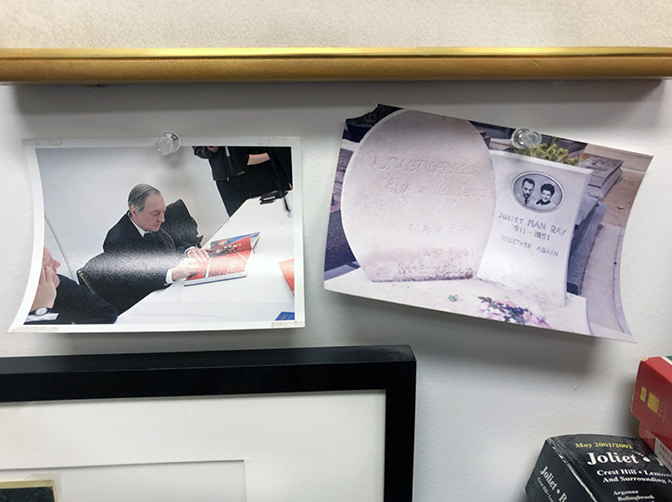
artist Man Ray (1890-1976) and his Juliet, Montparnasse Cemetery, Paris, France.
Scanning the space recently I was reminded that each item has a story. There are images detailing photographers, alive and long gone, whom I admire. There are oddities passed on or hung on my walls unknowingly (I still am uncertain who snuck in and deposited the “Life Changing Church” sign, though I suspect Mr. Paul Franzen and his merry pranksters in this amusing addition). At the surface there’s a sense of pride watching these walls be filled. These artifacts prompt recall. This is highly important in a profession where the cyclic nature of the job is embedded in the repetition of time. Each year a new set of students arrive. They are generally the same in terms of age and life experience. Regularly, you are introducing them to similar content (colour theory) previously discussed or tasking them with projects (tactile exercises), year in and year out. These repetitive actions (failed and achieved) often hold uncanny parallel’s with themes encountered in Oscar Wilde’s The Picture of Dorian Grey (1890). The purpose of art, transcendence of youth and beauty, the perfunctory nature of society, and the negative consequences of influence each weave themselves into conversation and critiques.
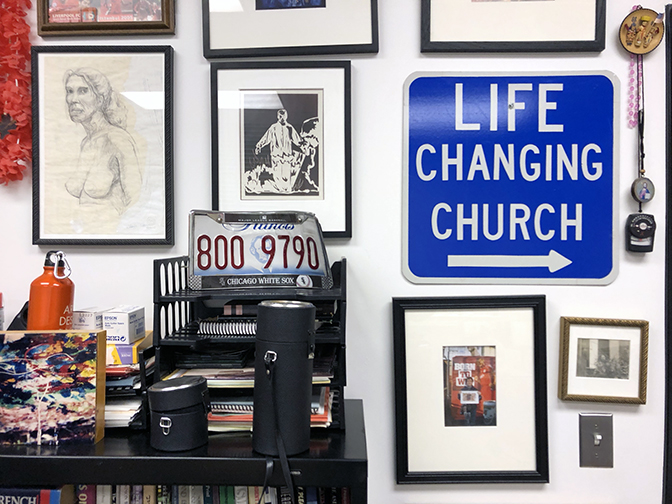
There is an ebbing and flowing inconsistency in the type of items that fill the office. The space can sometimes feel like one big mess. There are pictures of graduations, artworks that define the shift in aesthetic pursuit, and supplies that come and go. There are updated texts that change as technology advances filling shelves. The are old pictures that feel like they were made yesterday. The space is ever changing. This changeability becomes a central part of the character, its’ history, and an extension of myself. Glancing at a painting made by former adjunct painting instructor, Jen Poppin, offers memories of painting sessions in the quad. There are concert posters for the Chicago band Mayor Daley, Led Zeppelin, and Farm Aid. These sonic momento are contrasted with Liverpool FC scarves that present a glorious colour palette and entry into new worlds. The walls are now essentially covered in a French salon format from floor to ceiling. When a new advisee arrives for their initial meeting I sense a tinge of Stendhal syndrome present in the air.
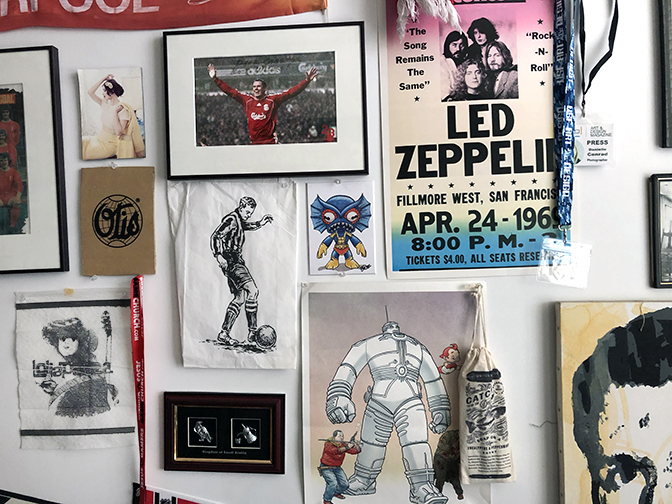
There is also that fine line of hoarding. All of us are culprits at some point in life. It’s certain that in 20+ years a mountain of shit can accumulate. Early on, I purchased a shredder, so papers have not been a thought. My dilemma has resided in technology, cameras, gaming systems, and computers. With the shift from analog to digital, each year I get an e-mail or call from someone who has an old Pentax K1000 or Canon AE-1 they want to donate. I never say no. Over time, the space has been littered with Soviet era cameras from Russia to recent knockoffs from China; there’s still functioning Polaroid SX-70s, early 20th c. press cameras, and pocket-sized digital video cameras. In a corner is a stack of old Mac and PC towers that reach waist level next to my first large format view camera that I still have out for the occasional chat about bellows factor and parallax. I just cannot let go.
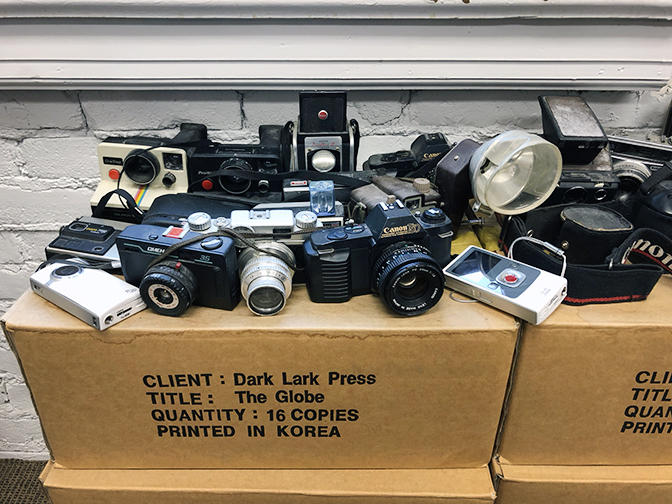
a box of “The Globe” photobooks.
We are now approaching midterms after a shaky return to face-to-face classes. When Covid-19 arrived last spring, it stifled productivity and turned all of our lives upside down. Yes, there is potential for another wave, but I feel we are a bit more set in a response. Life does appear to be moving back to some type of normality. Let’s hope that level heads prevail in November, regardless of election results. We need to move on, as one. At midlife there’s been a general propensity to consider many items as turning points. I see this when looking at 30+ years as an artist and educator, and 20+ years as a husband. Life’s engagements offer a different perspective these days. There is much uncertainty (FYI: this has always been a constant), negativity just appears more amplified at present. Regardless, my hope is to have the opportunity to look back at this space in another decade or two, reflect upon the environment again, and consider those colleagues, friends, and students who have passed through. If you have made it to the end of this ramble, thank you for entertaining this indulgence. I wish you and your family good luck and health as autumn sets in. Please, make sure to wear that mask, this gesture of respect is the least we can do.
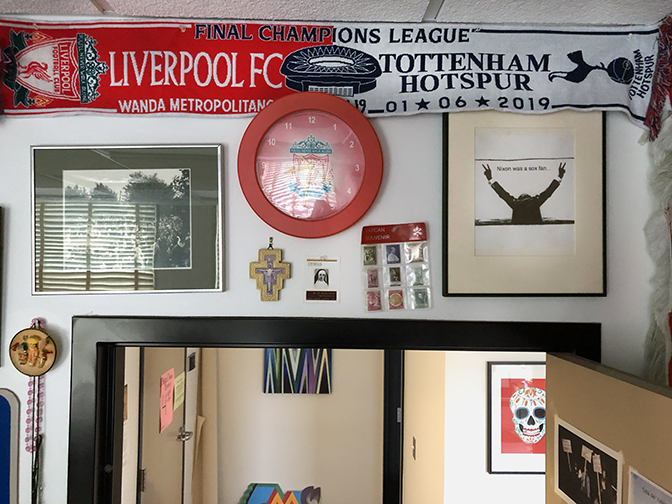
in Madrid, Spain are flanked by a photograph of the university’s ground breaking
in 1920 and other oddities.
Additional images of an Art & Design office at the University of St. Francis:
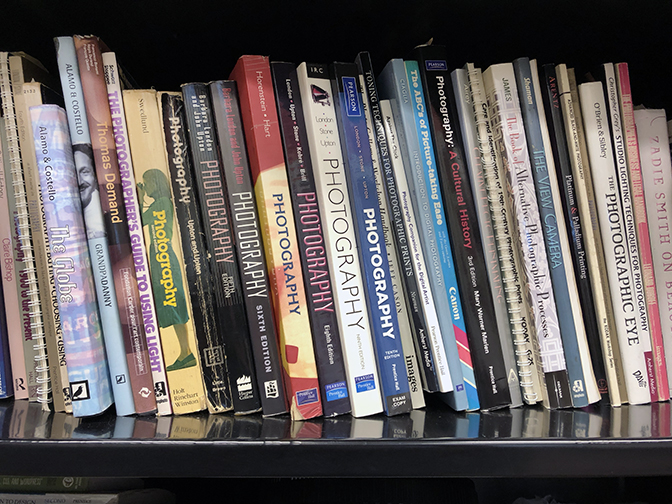
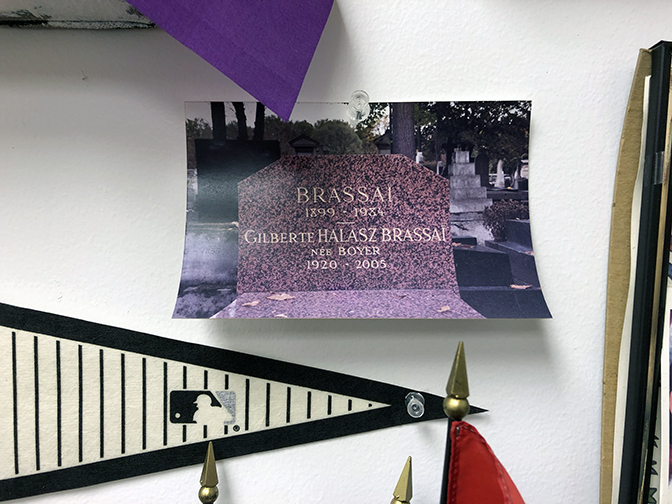
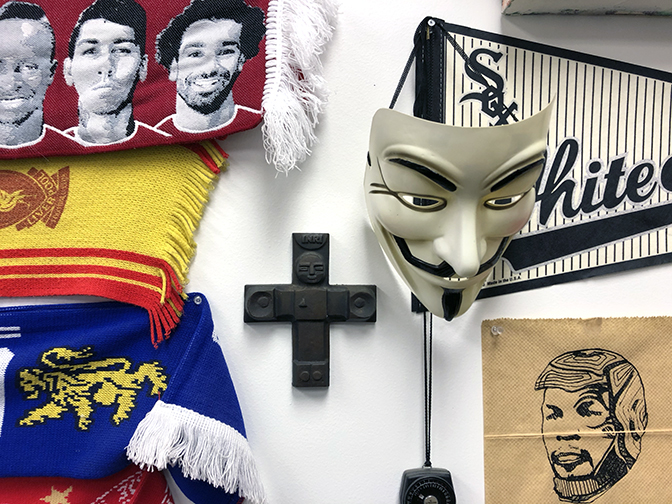
Guy Fawkes mask from the Occupy movement.
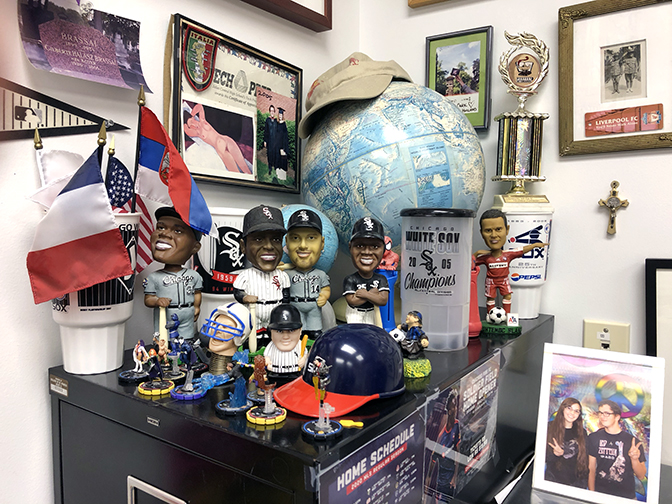
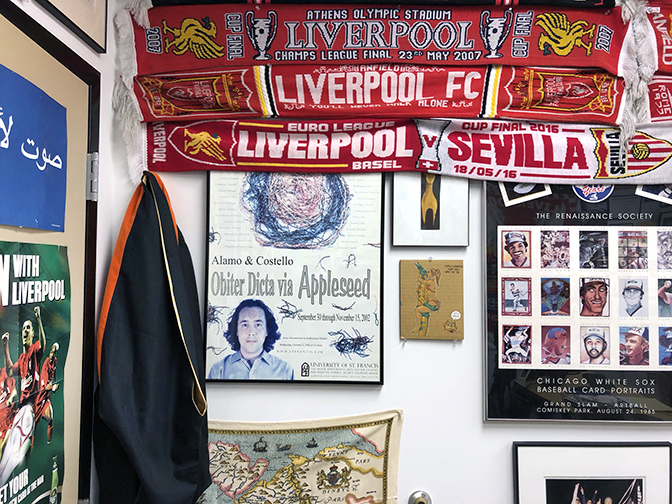
Photographs and writing by Chester Alamo-Costello


